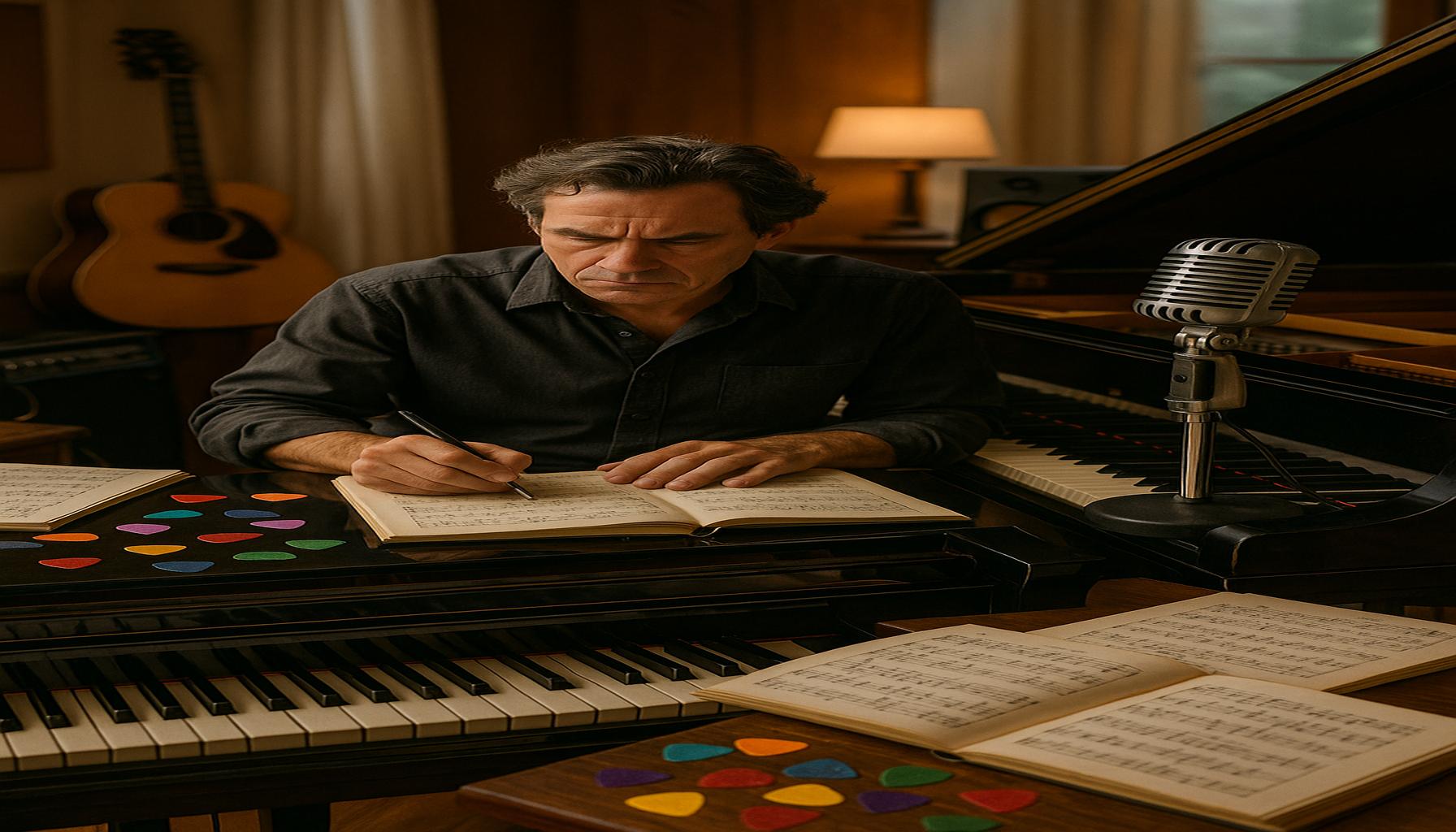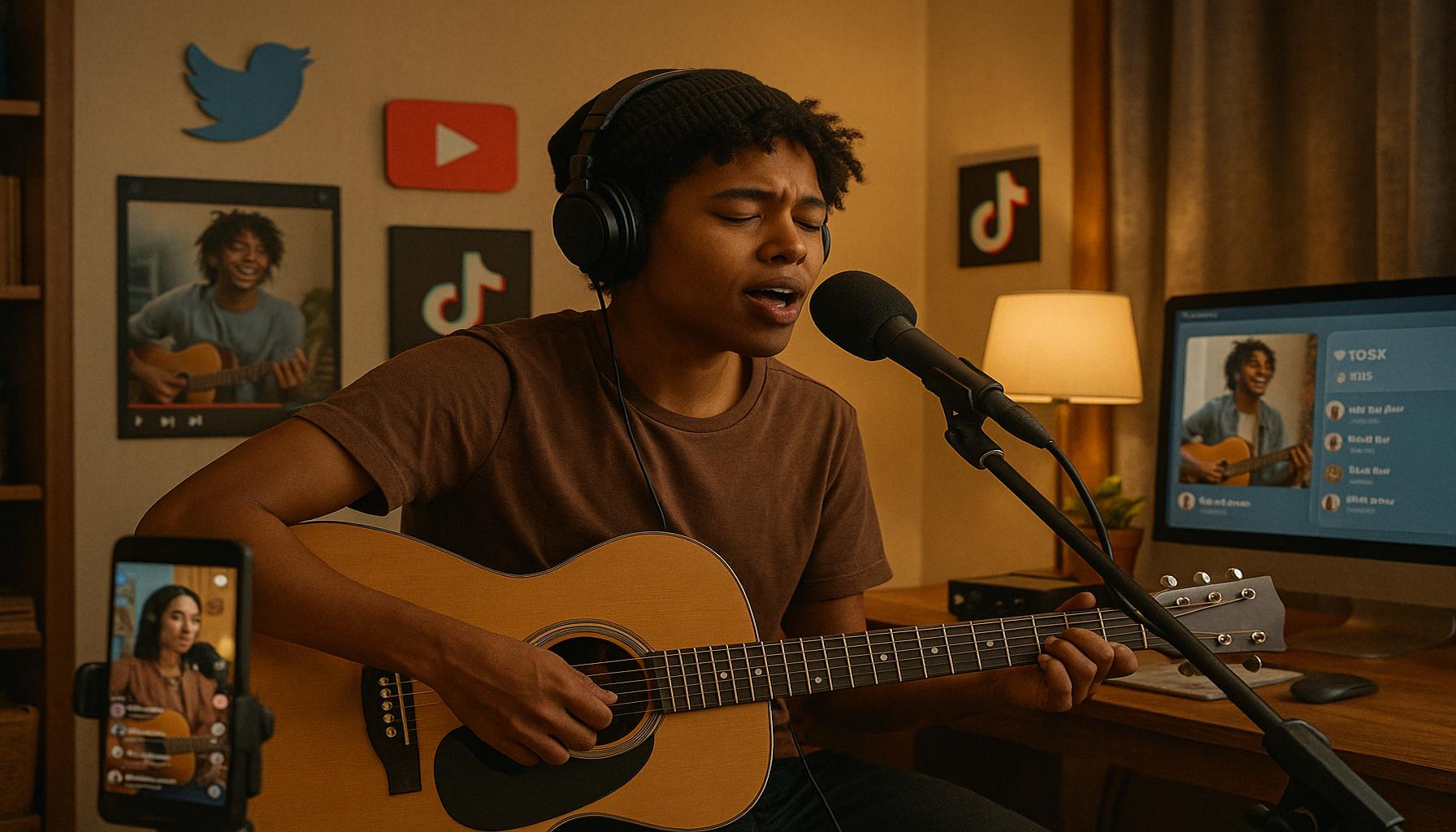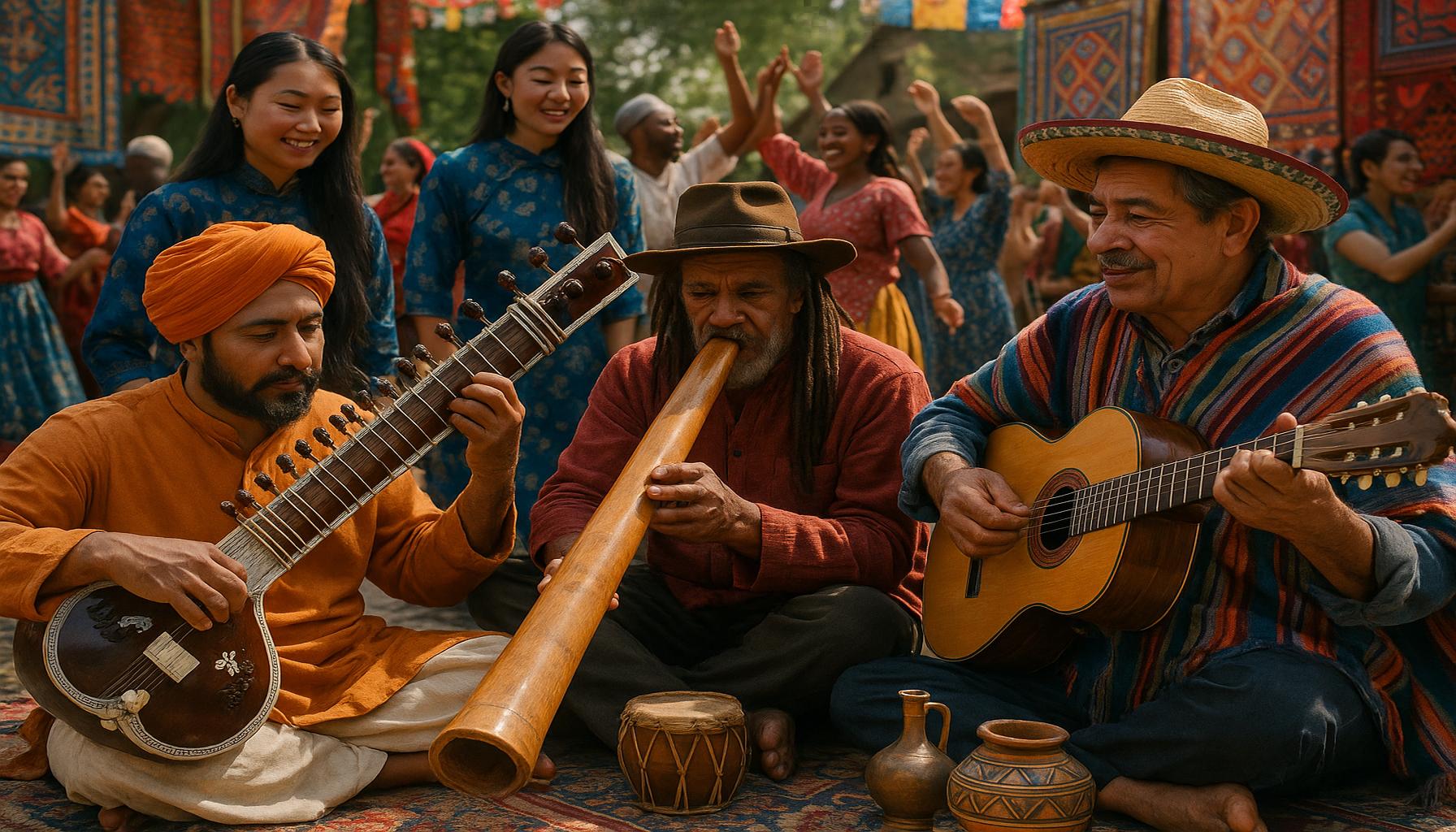Music as a Tool for Social Inclusion: The Impact of Music Projects in Disadvantaged Communities
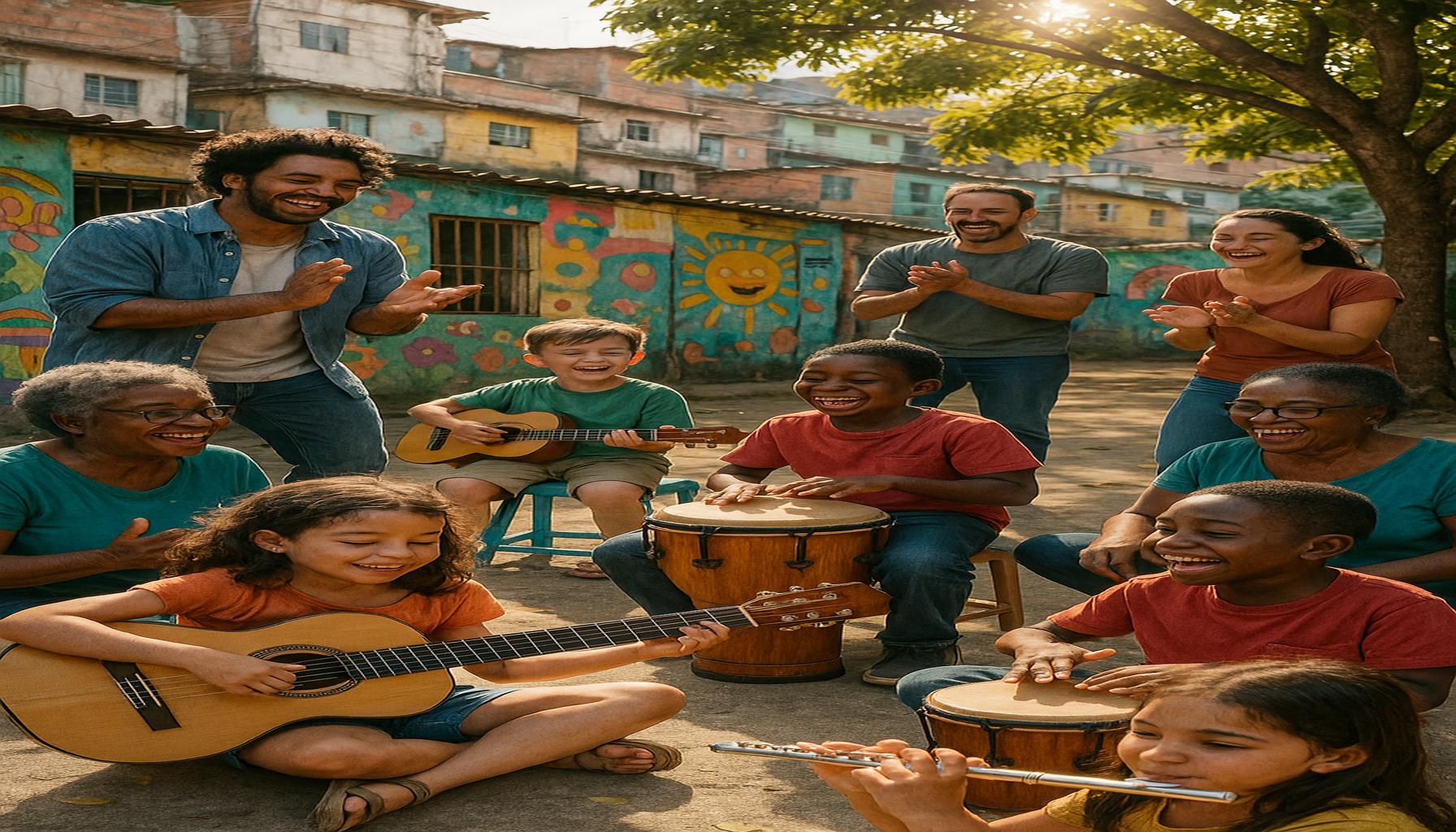
The Transformative Power of Music
In recent years, music has been recognized as a catalyst for social change, fostering inclusion and helping to build cohesive communities. This is particularly evident in disadvantaged areas across the United States, where various music initiatives have taken root. These programs do not merely provide entertainment; they serve as powerful instruments for empowerment and connectivity among individuals from diverse backgrounds.
One of the most significant advantages of music programs is their ability to create community bonds. Engaging in group activities such as community choirs or marching bands allows participants to collaborate, share experiences, and build trust. For instance, organizations like the Los Angeles-based “Harmony Project” have successfully brought together children from different socioeconomic backgrounds. Through music, these young people develop lasting friendships and a sense of belonging, fostering an environment where collaboration is second nature.
The enhancement of self-expression is another crucial benefit of these programs. Music offers individuals an avenue to communicate their thoughts and emotions, which can be especially therapeutic for those facing personal struggles. In Chicago, the “People’s Music School” provides underprivileged children with the opportunity to compose and perform their music. This not only boosts their confidence but also allows them to narrate their unique stories, helping to dismantle stereotypes and promote understanding within the community.
Furthermore, many music initiatives focus on providing educational opportunities. By incorporating music theory, performance training, and even music production, participants acquire skills that can enhance their future career prospects. For example, programs like “Notes for Notes” teach youth not just how to play instruments, but also about the business side of music, giving them practical skills for various pathways in the industry.
Moreover, studies indicate that involvement in music not only enhances cognitive development and emotional well-being but also strengthens familial and neighborhood ties. In rural communities, youth-led bands often perform at local events, drawing residents together and instilling pride in their cultural heritage. These musical gatherings cultivate an environment where people feel valued, respected, and integrated into the community.
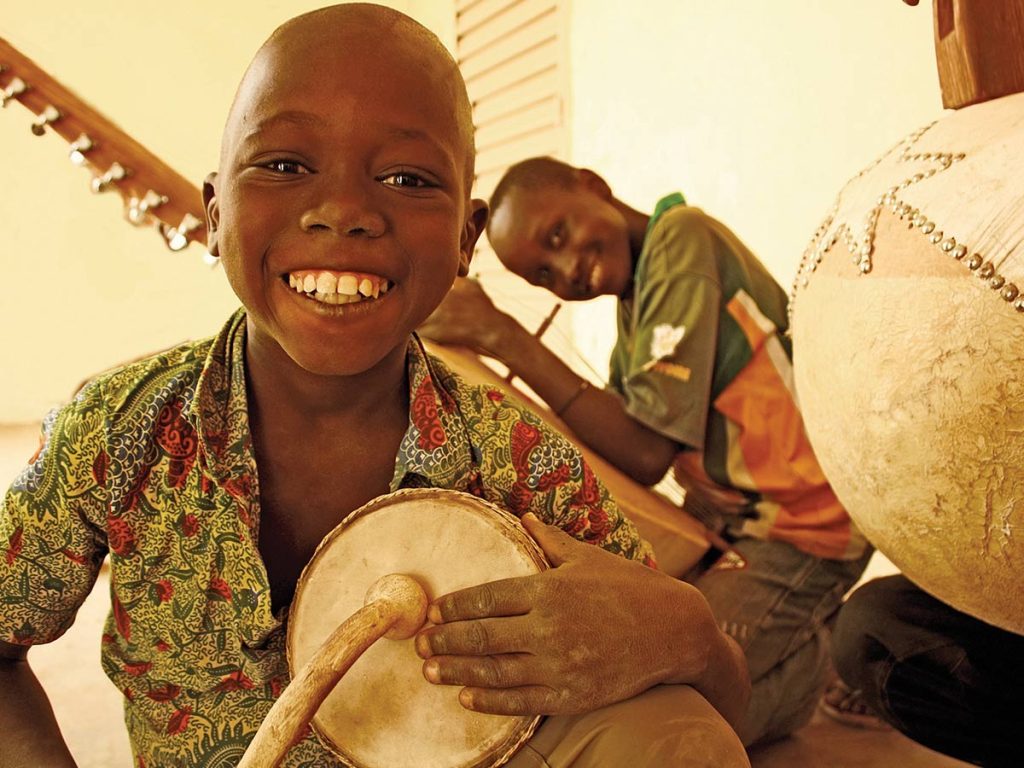
As music projects continue to flourish, their importance in advocating for social change and fostering inclusion cannot be overstated. Around the country, stories of success from these initiatives highlight their impact on individuals and communities alike. By examining these programs, we can gain a deeper understanding of how music holds the potential to unlock creativity, ignite connection, and inspire a collective spirit of resilience and hope.
DIVE DEEPER: Click here to discover how technology is
Building Bridges Through Rhythm
Music’s remarkable ability to heal divisions and build bridges in society is vividly illustrated through numerous projects operating in disadvantaged communities. These initiatives not only resonate with individuals on a personal level; they also serve as a collective voice for underrepresented populations. By weaving melodies into the fabric of social life, these programs have become essential in breaking down barriers and fostering an inclusive environment.
A prime example can be found in the “Sing for Hope” initiative, where musicians partner with underserved schools and community centers across New York City. This program brings professional artists into classrooms, exposing students to high-quality music education and performances. The impact is profound—students not only learn to play instruments or sing, but they also find a community where their talents are celebrated, and their voices are heard, allowing them to transcend socioeconomic constraints.
Another vital aspect of music projects is their capacity to offer diverse cultural experiences. In cities like San Francisco, organizations such as “The Contemporary Jewish Museum” incorporate diasporic musical traditions into their programming. This cultural exchange enriches the community by providing attendees a chance to experience different heritages through music, fostering respect and understanding across varied cultural backgrounds. When individuals come together to share their unique stories through song, it cultivates an atmosphere of acceptance and collaboration.
Moreover, these music initiatives often address significant social issues that affect disadvantaged communities. For instance, the “Turnaround Arts” program focuses on schools in low-income areas by integrating the arts, including music, into the educational curriculum. Research has shown that when schools encourage creative expression, students experience reduced behavioral issues and improved academic performance. Here are some noteworthy contributions of such projects:
- Increased Student Engagement: Music education encourages regular school attendance and participation in other school activities.
- Emotional Resilience: Engaging with music offers a therapeutic outlet, enabling young people to navigate personal challenges.
- Community Recognition: As individuals thrive through these programs, the community begins to recognize and value the unique contributions of all members.
Furthermore, the sense of empowerment cultivated through structured musical experiences cannot be overstated. For many individuals in disenfranchised communities, music projects become a source of agency, allowing them to articulate their narratives and address issues that matter to them. Whether through song lyrics, organized performances, or simply sharing music in community gatherings, these platforms create opportunities for social discourse and positive change.
In essence, as music projects take root in various neighborhoods across the United States, their implications extend beyond mere entertainment. They become an integral part of community identity, playing a pivotal role in uniting people, celebrating diversity, and promoting social inclusion. By recognizing the power of music in constructing social fabrics, we pave the way for a more harmonious society where everyone has a voice.
| Advantage | Impact |
|---|---|
| Community Cohesion | Music projects foster a sense of belonging, uniting diverse groups through shared creative expression. |
| Empowerment of Individuals | Participating in music initiatives strengthens self-esteem and provides essential skills for personal growth. |
| Improved Mental Health | Engagement with music has therapeutic effects, helping individuals cope with trauma and anxiety. |
| Cultural Preservation | Projects often emphasize local musical heritage, ensuring that important cultural identities are maintained. |
The role of music in social inclusion extends beyond mere entertainment; it represents a powerful vector for change in disadvantaged communities. By bringing individuals together and encouraging collaboration, music serves as a catalyst for personal and communal transformation. Through targeted music projects, participants gain a platform to express their thoughts, emotions, and experiences, effectively shaping their narratives while at the same time creating connections with others. Moreover, the therapeutic nature of music contributes significantly to mental health, enabling individuals to process complex feelings and challenges they face. Not only does this promote healing, but it also facilitates greater understanding among community members. The interactive and inclusive nature of these projects nurtures a collective spirit, underscoring the importance of cultural identity and fostering pride within the community. As we explore the diverse impacts of music in social contexts, it becomes evident that systemic changes stemming from these initiatives can enrich lives on multiple levels. The insights gathered from community-based music programs can provide valuable data for policy makers and organizations aiming to replicate successful models effectively.
DIVE DEEPER: Click here to discover more
Harmony in Diversity
The role of music in fostering social inclusion extends beyond mere participation; it also plays a transformative role in cultivating a sense of belonging among individuals from different backgrounds. By emphasizing musical collaboration, community projects begin to reshape perceptions, breaking down stereotypes that often hinder the unification of diverse populations. Programs like “Music Unites,” which operates in various urban areas, are at the forefront of this movement. They create cross-cultural collaborations where individuals from varied ethnic and socioeconomic backgrounds come together to produce music, creating a shared experience that helps dissolve cultural barriers.
This emphasis on collaboration not only enhances musical skills but also breeds friendship and mutual respect. Participants frequently express that they find common ground through music, even when their cultural narratives differ significantly. This approach resonates particularly well in cities with rich cultural diversity like Los Angeles, where initiatives such as “Harmony Project” engage underserved youth in music ensembles, allowing them to learn from each other’s unique musical heritages. The outcomes are worth noting: community bonding is strengthened, leading to enhanced social cohesion.
Furthermore, music projects contribute to the economic revitalization of disadvantaged areas by providing employment opportunities and fostering local talent. For instance, the “Chicago Youth Symphony Orchestra” not only trains young musicians but also brings together local artists for performances, thereby stimulating local economies. Young musicians who might otherwise struggle to find meaningful employment are often given opportunities in teaching, event planning, and community organizing through these projects. This not only helps individuals secure a stable income but also reinforces the value of their contributions to the community.
Research in this field also shows that music education impacts cognitive development. According to a study published by the National Endowment for the Arts, children engaged in structured music programs exhibit improved reading skills, mathematical proficiency, and critical thinking abilities. These benefits are particularly significant for students in low-income neighborhoods, where access to resources is limited. By integrating music into their education, students not only enhance their academic achievements but also gain confidence and self-esteem, qualities vital for future success.
Incorporating technology into music initiatives has opened even more avenues for social inclusion. Programs like “Play for Change” utilize digital platforms to connect individuals across geographic boundaries, offering online tutorials and collaboration sessions. This innovation enables those in isolated communities to participate in music projects that might otherwise be unavailable to them. The power of the internet thus becomes a tool for connectivity, showcasing how music can transcend physical barriers and promote wider social inclusion.
Additionally, the emotional impact of music cannot be overlooked. Many music initiatives incorporate mental health awareness into their programming. For example, the “Musical Wellness” campaign integrates music therapy in underserved areas to address issues such as anxiety and depression. By allowing individuals to express their feelings through music, these sessions provide critical emotional support, helping participants build resilience as they navigate challenging circumstances.
By examining the multifaceted benefits of these music projects, it becomes clear that they are essential instruments for fostering social inclusion. They instill pride in cultural identity, promote economic growth, and enhance personal development. As the collective power of music continues to be harnessed in disadvantaged communities across the United States, the call for widespread access to such programs reverberates louder than ever, pushing towards a future where the unifying essence of music is available to all.
DIVE DEEPER: Click here to explore the impact of digital arts
Conclusion: A Melodic Path to Unity
As we delve into the extraordinary world of music as a tool for social inclusion, it becomes evident that its impact extends far beyond mere entertainment. Music projects spearheading social inclusion in disadvantaged communities serve as a critical bridge, connecting individuals from diverse backgrounds and fostering understanding through shared experiences. These programs, such as “Music Unites” and “Harmony Project,” emphasize collaboration, enabling participants to create a sense of belonging while dismantling preconceived notions and stereotypes.
Moreover, the economic and cognitive benefits associated with music participation cannot be overlooked. By providing employment opportunities and stimulating local economies, these initiatives not only uplift individuals but also contribute to communal growth. Simultaneously, evidence suggests that structured music education enhances critical thinking and academic performance, particularly for youth in low-income neighborhoods. Music thus acts as a powerful equalizer, granting access and resources to those who need it most.
Advancements in technology further amplify these efforts, breaking geographical barriers and allowing isolated communities to partake in music programs. The emotional support fostered through music therapy initiatives exemplifies its healing power, underscoring the necessity of mental health awareness in these contexts. As we advocate for a broader reach of such projects, it is clear that music holds the potential to harmonize diverse societies, cultivate resilience, and facilitate social cohesion.
In conclusion, the call for accessible music programs is not merely a call for cultural enrichment; it is a vital step towards fostering an inclusive society where everyone can thrive. As the rhythms of hope resonate through disadvantaged communities, let us recognize and support the transformative power of music in shaping a more unified future.
